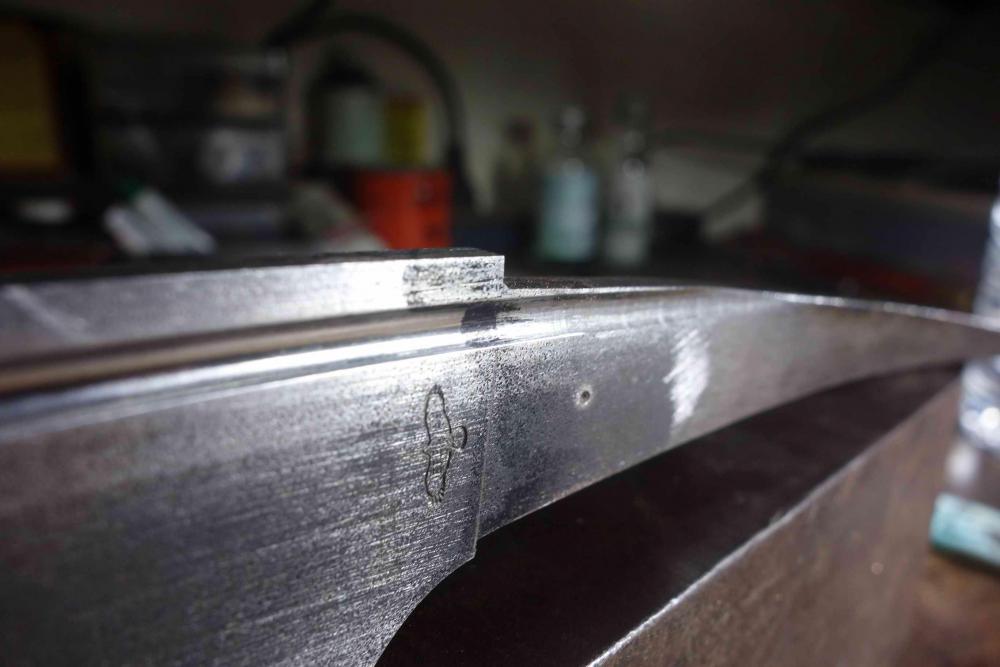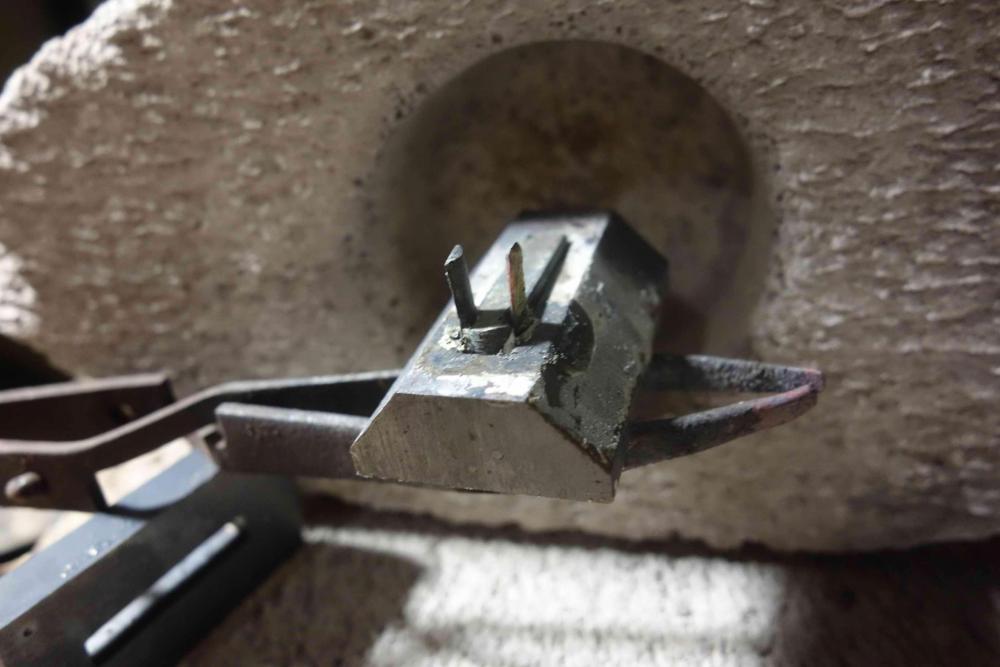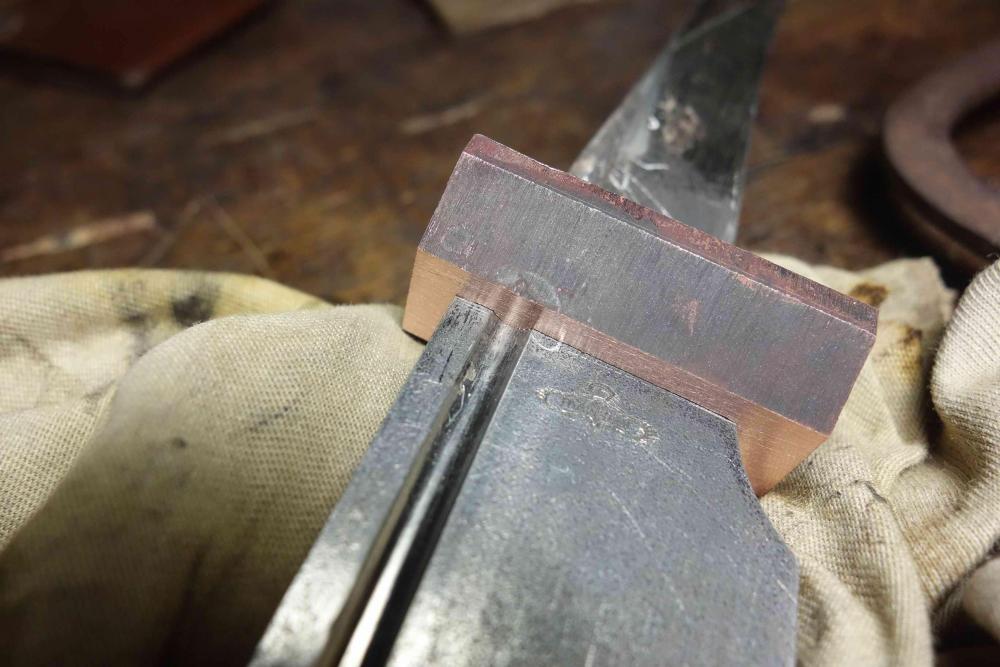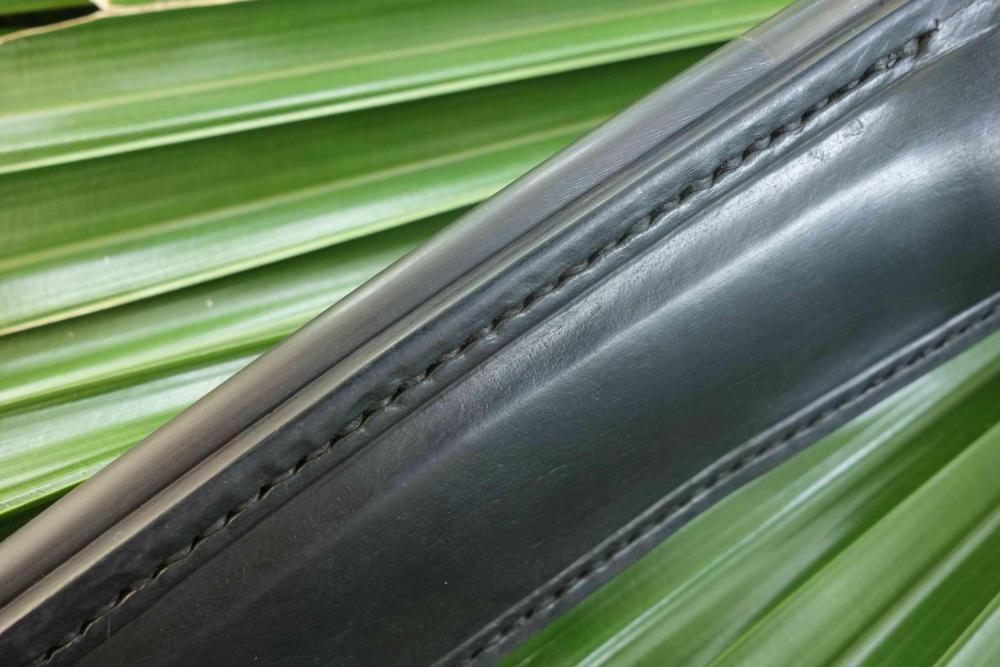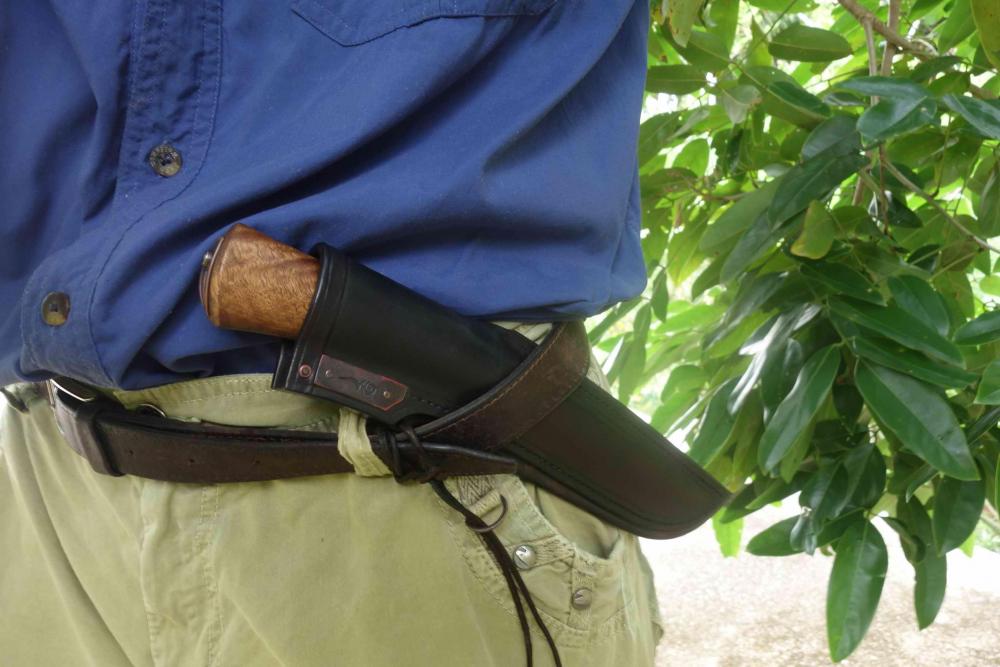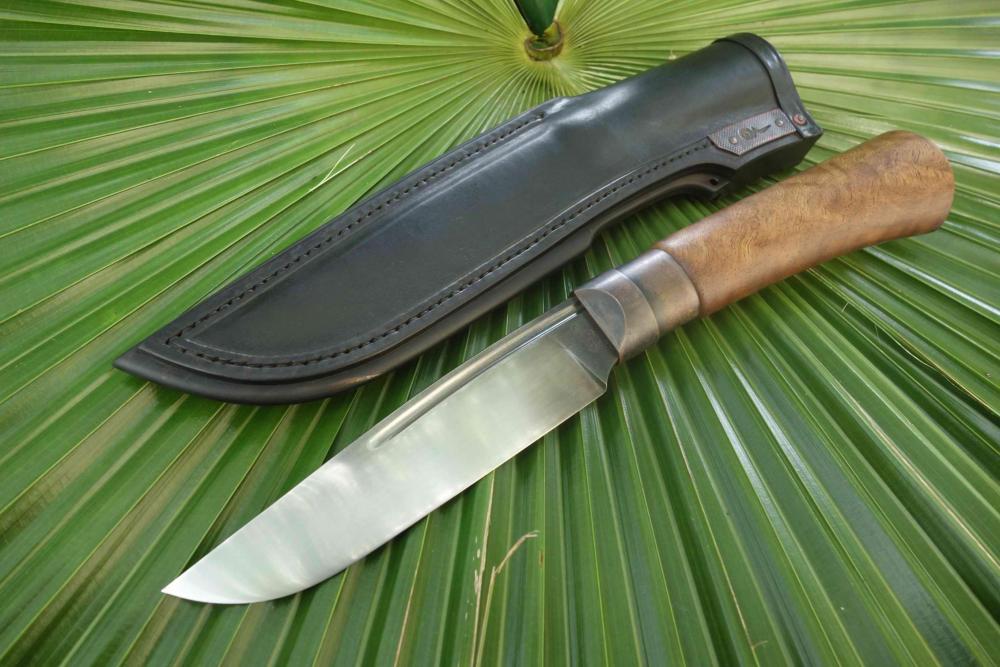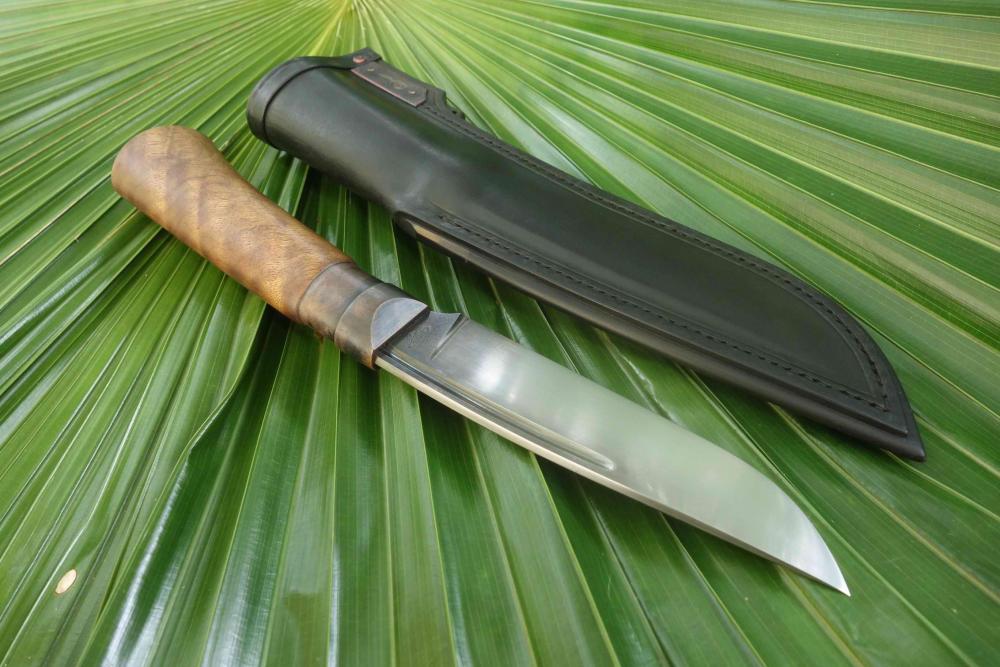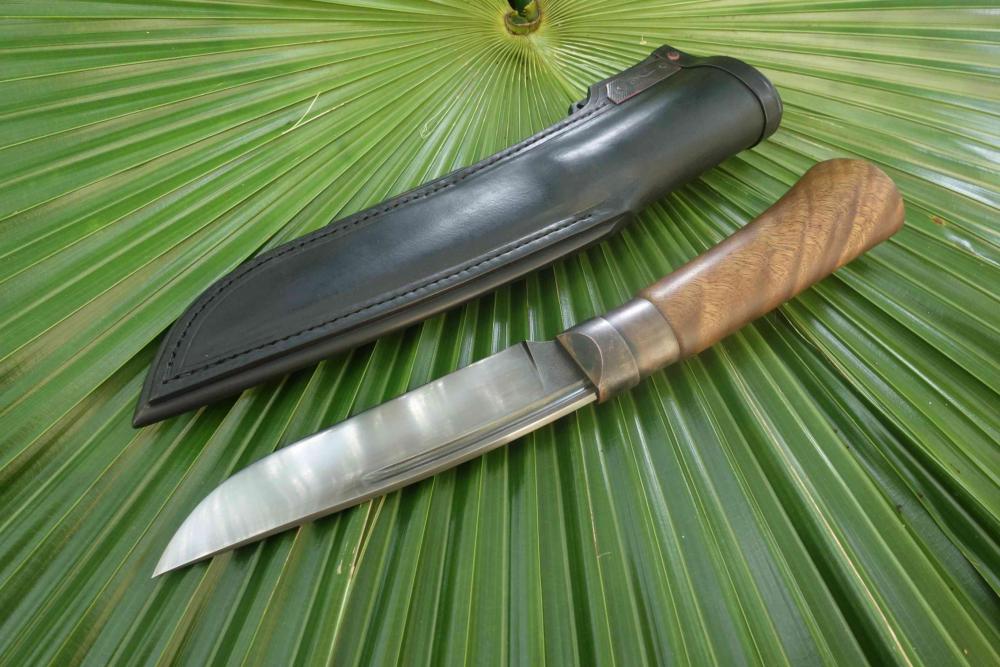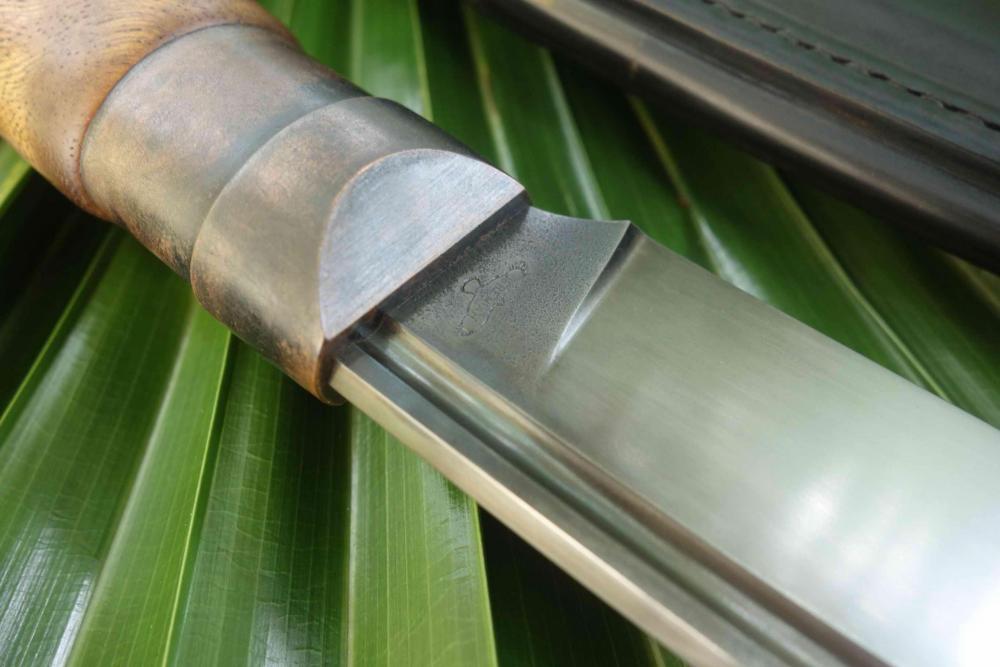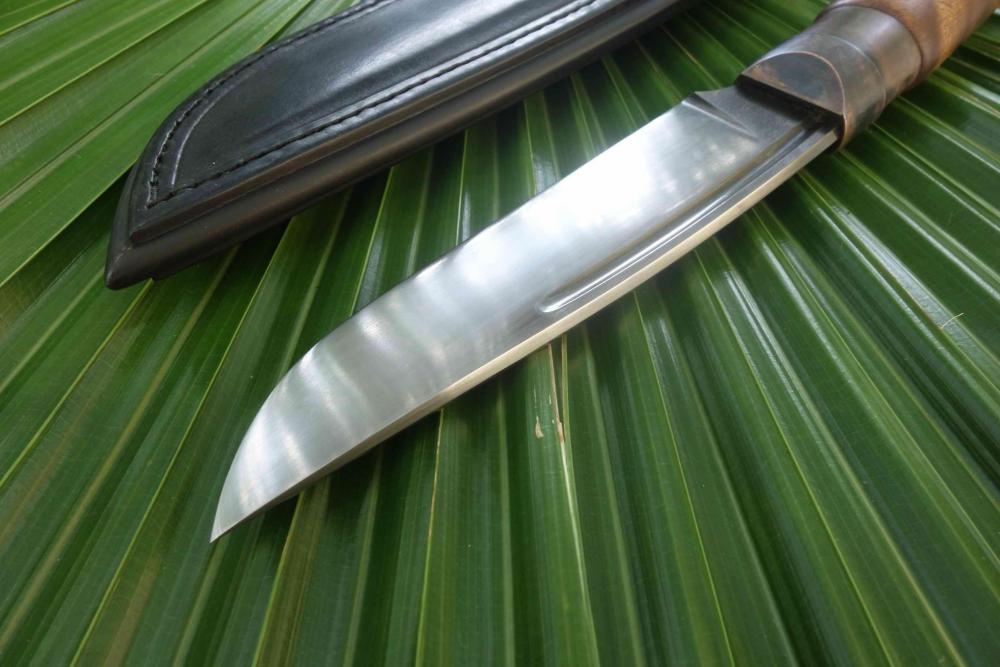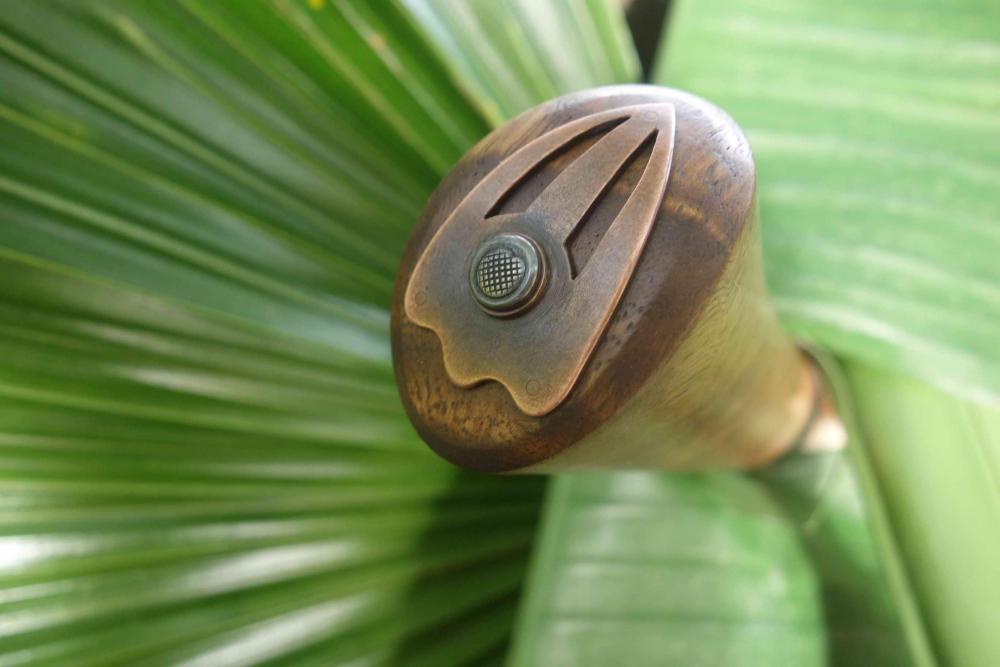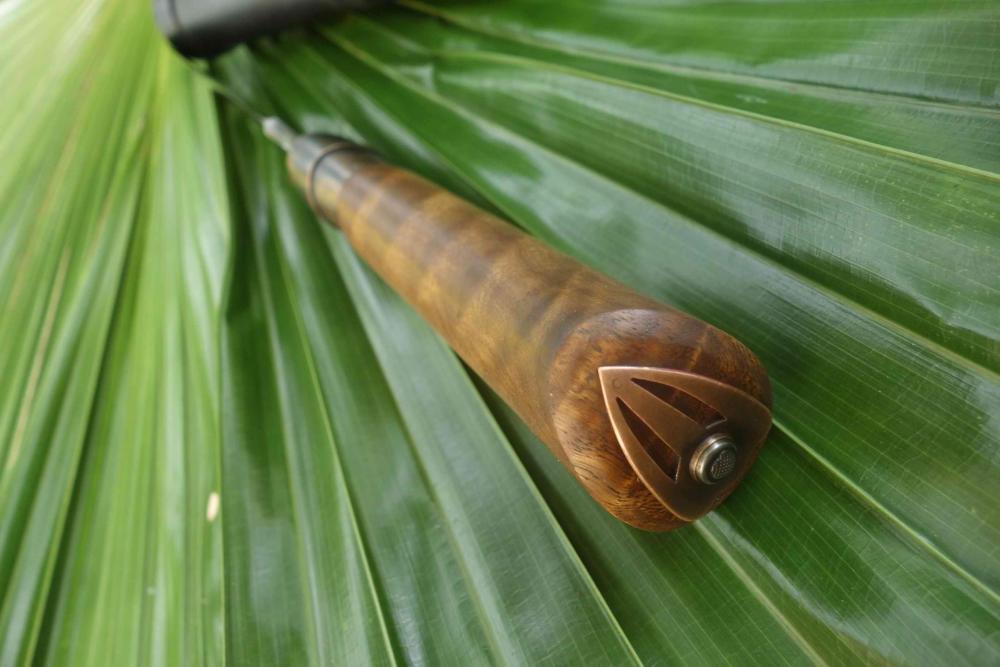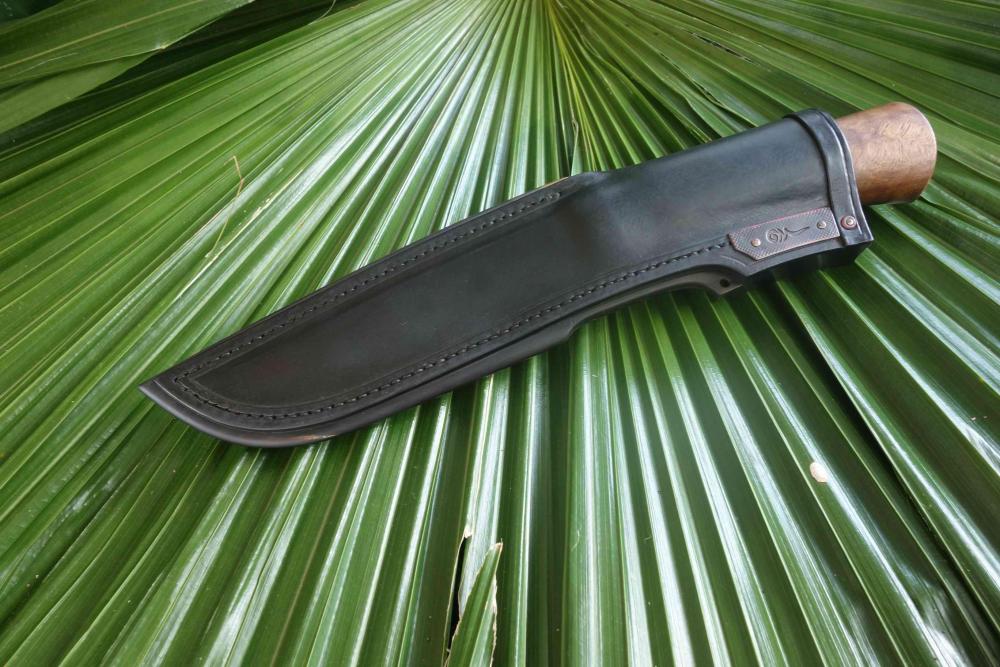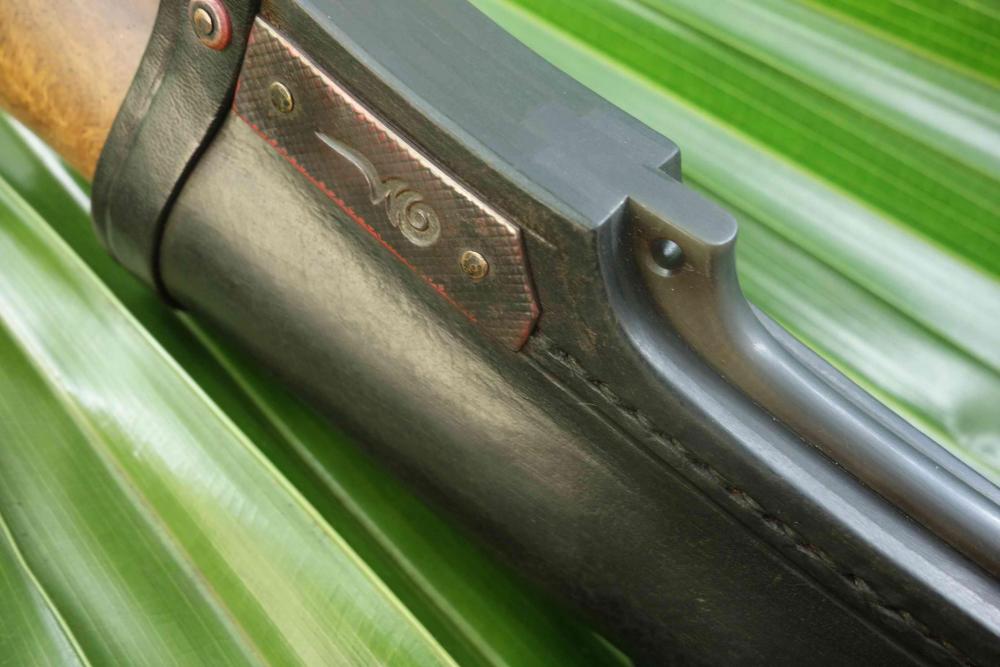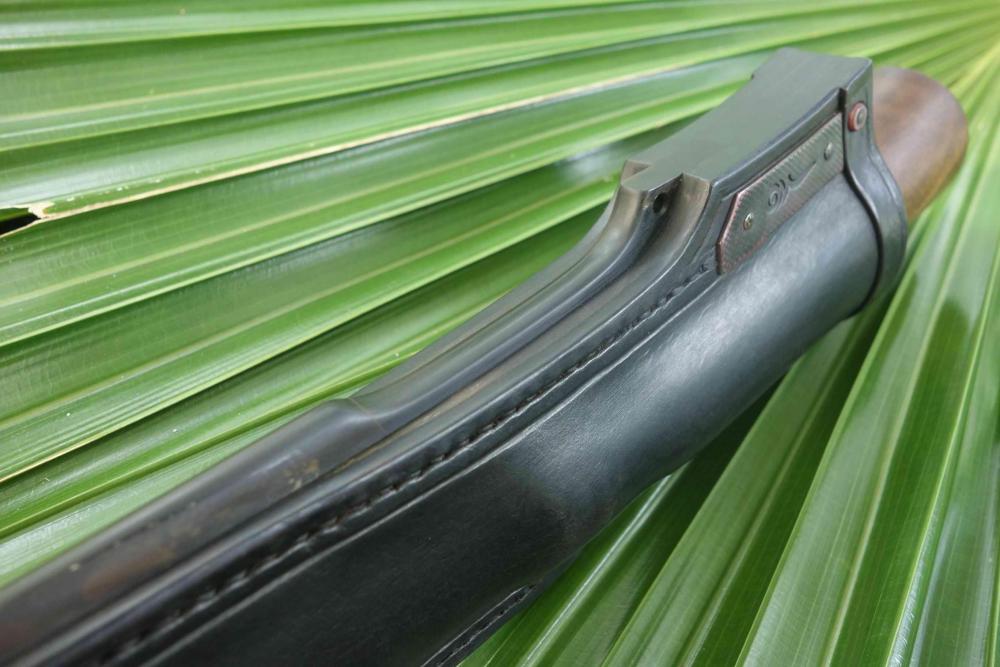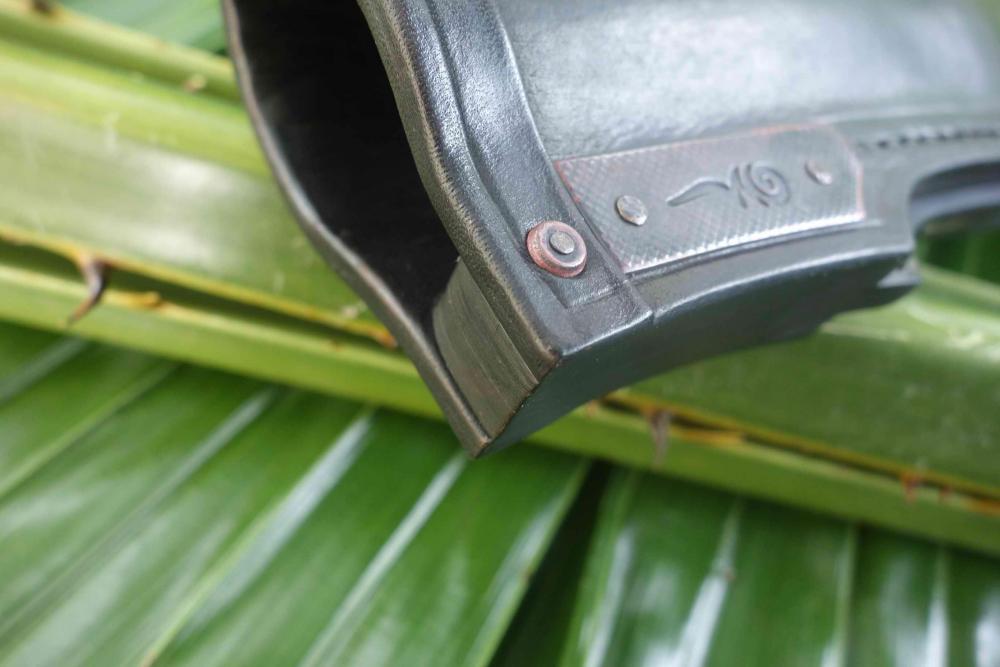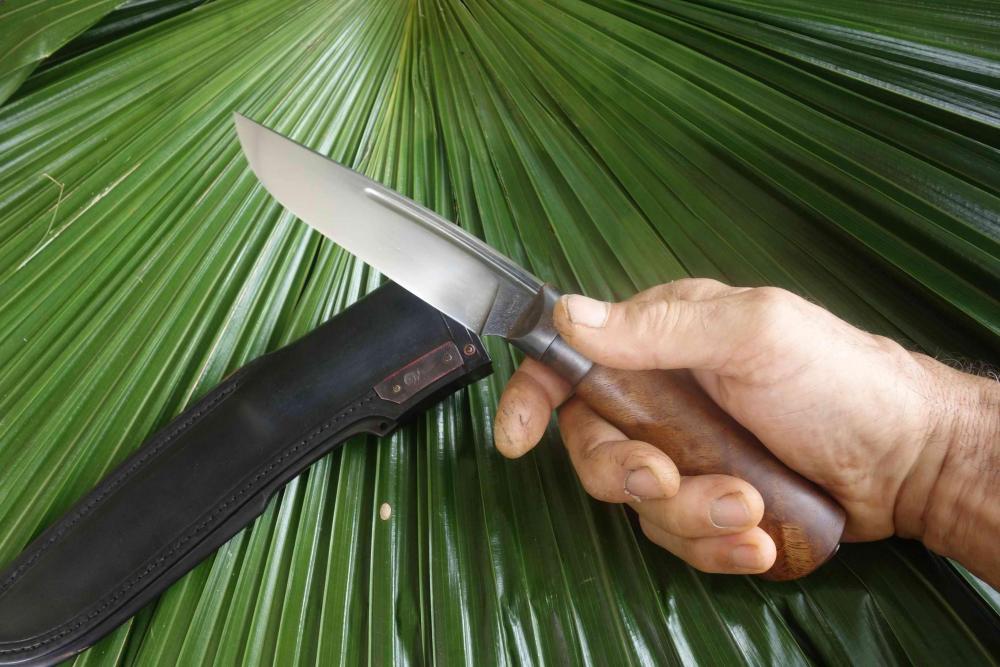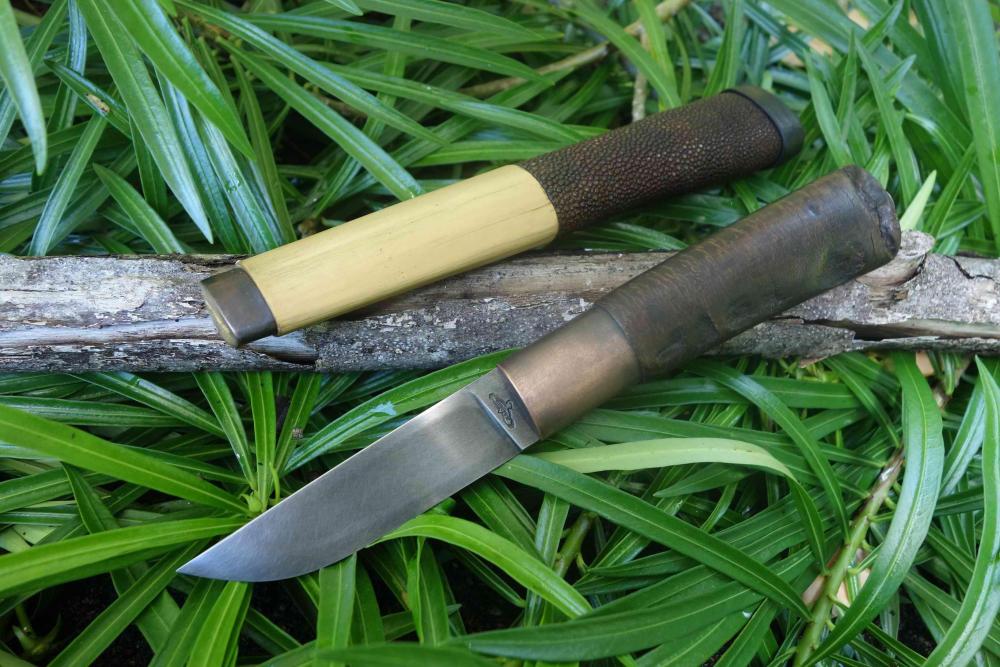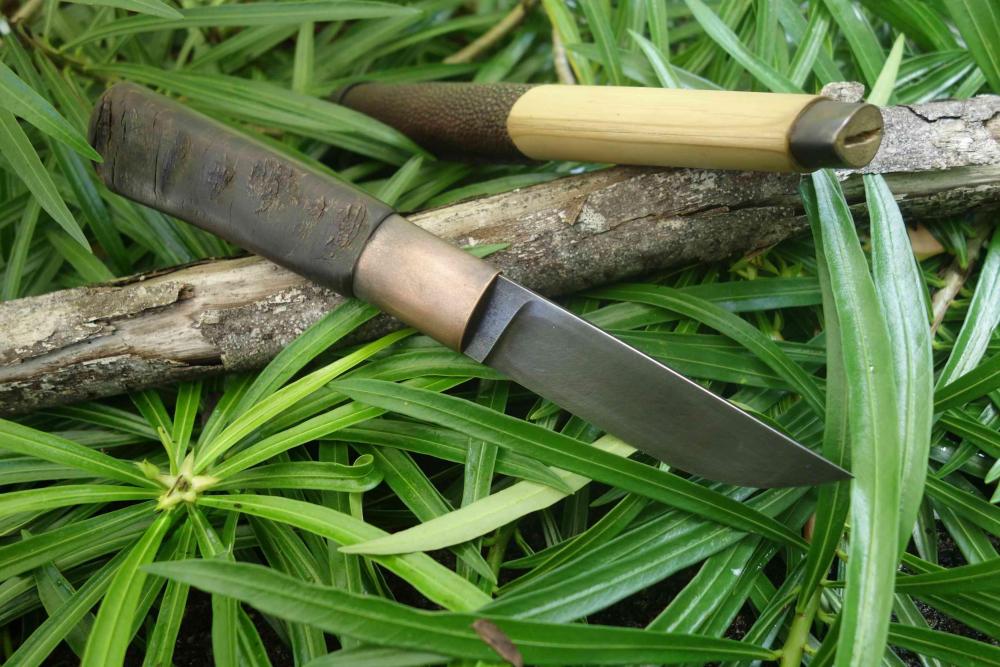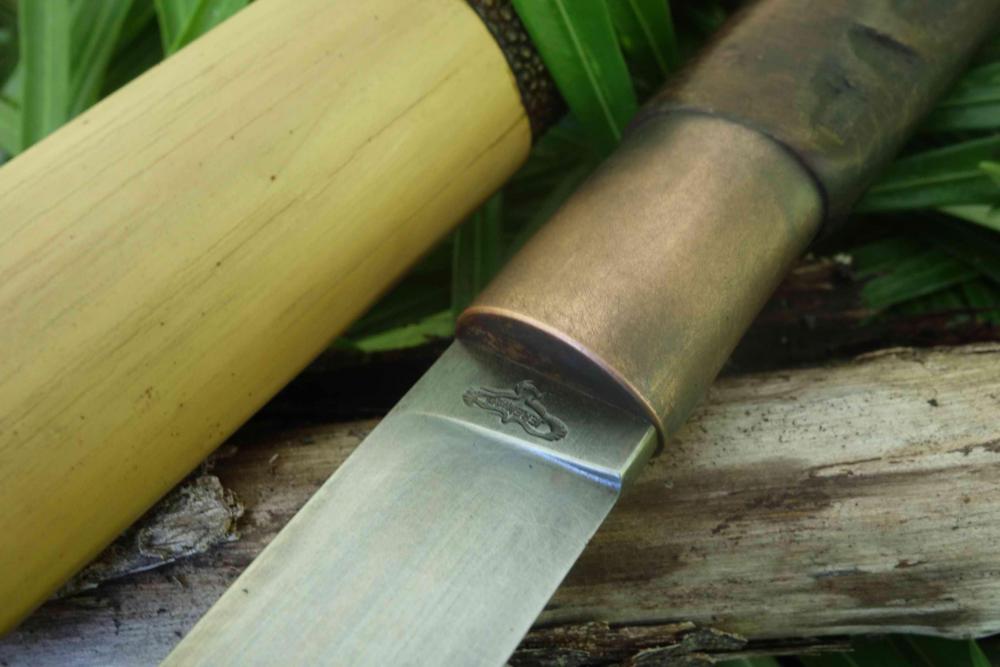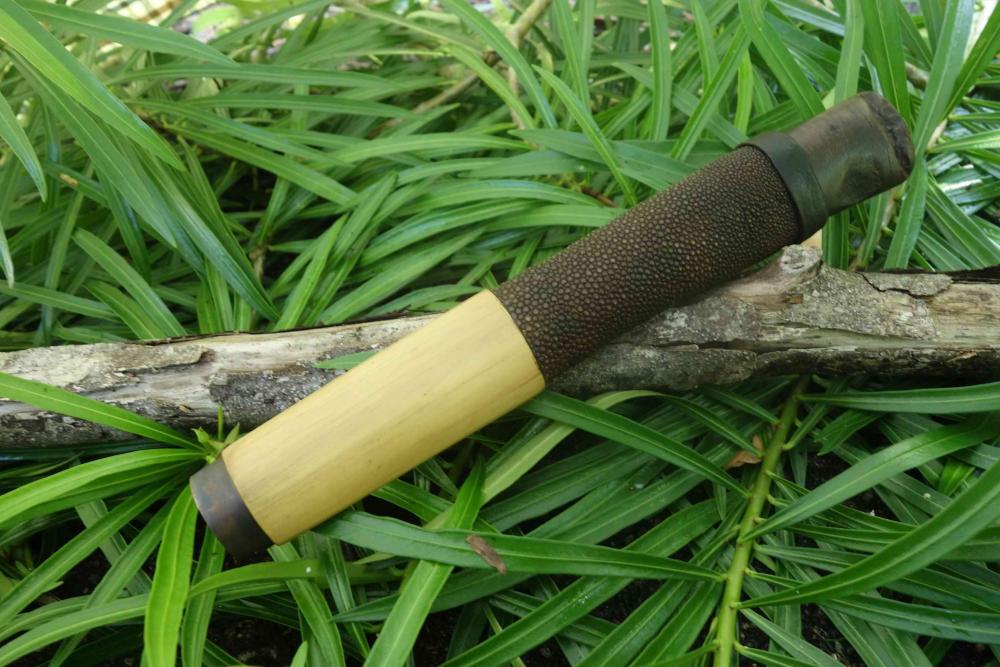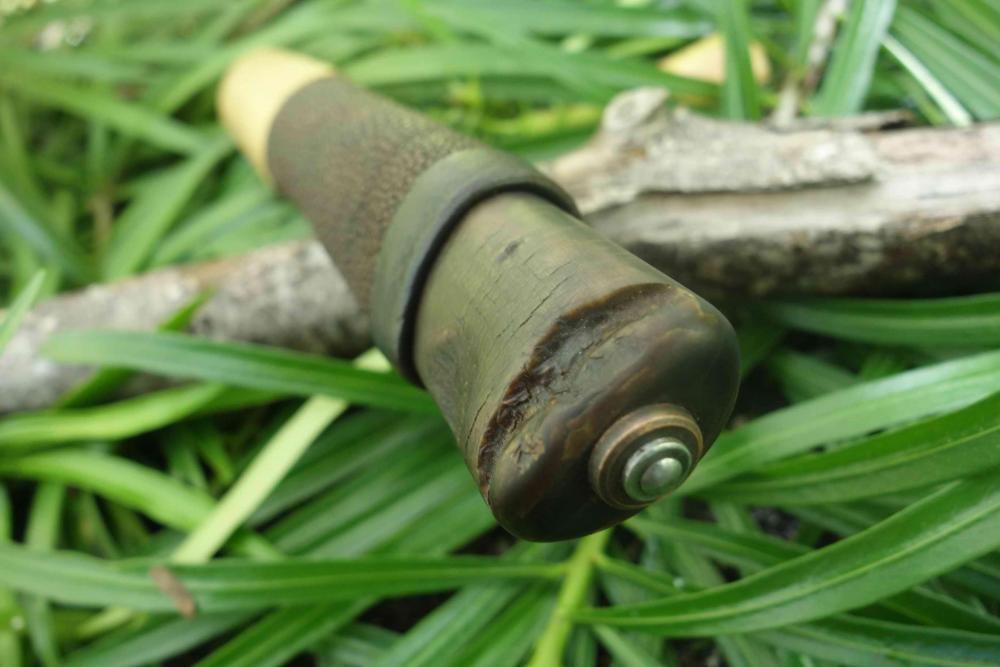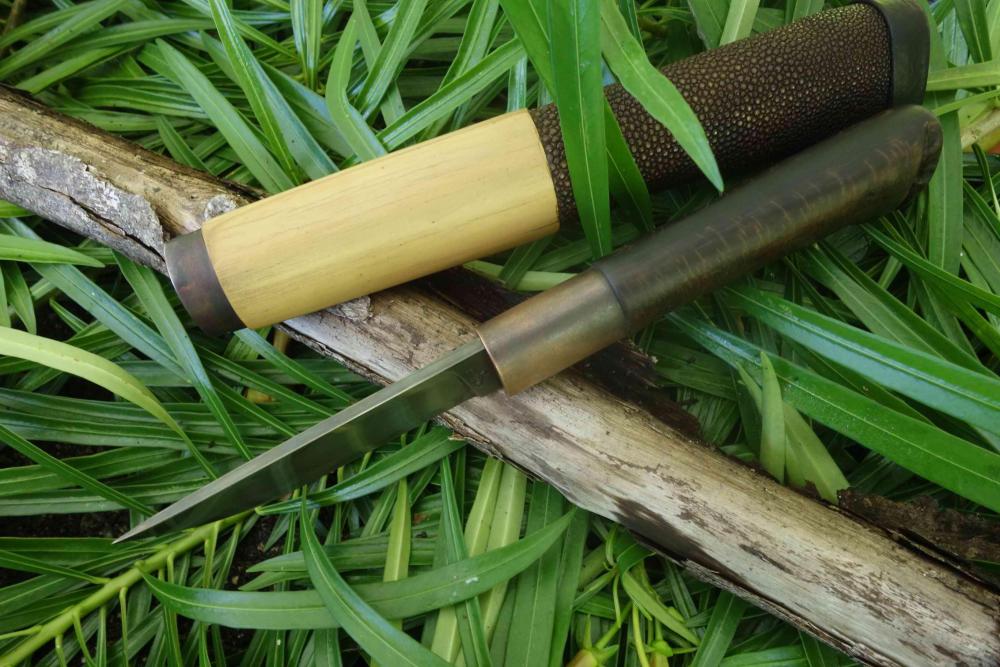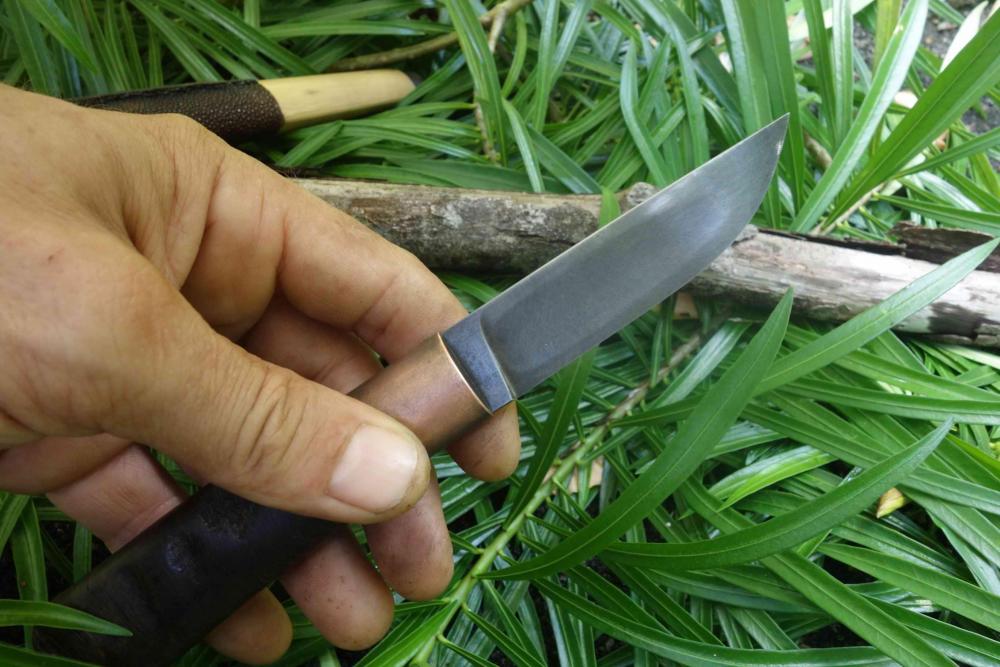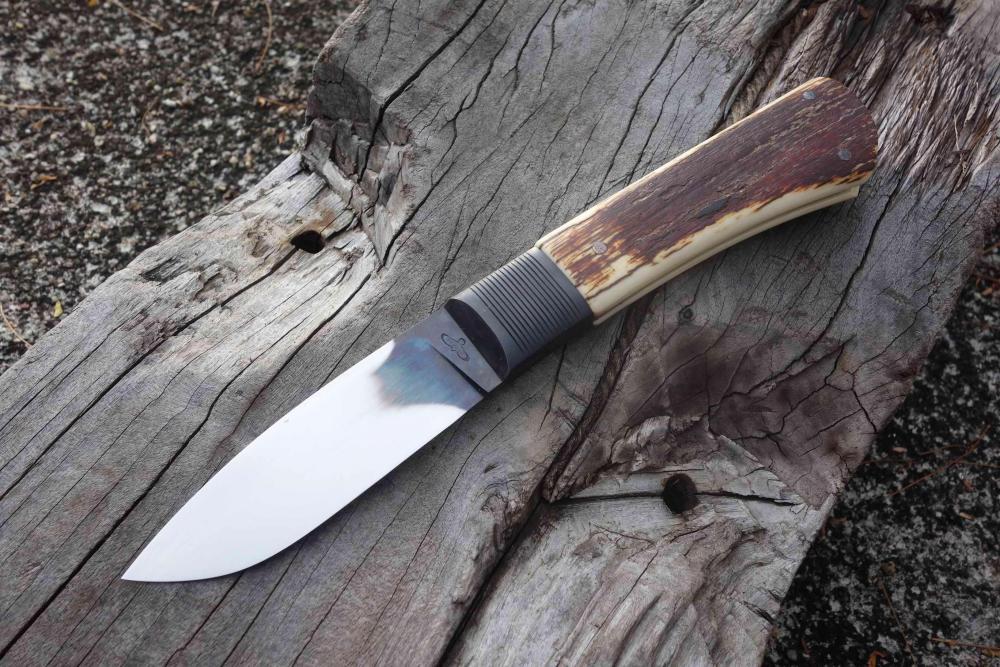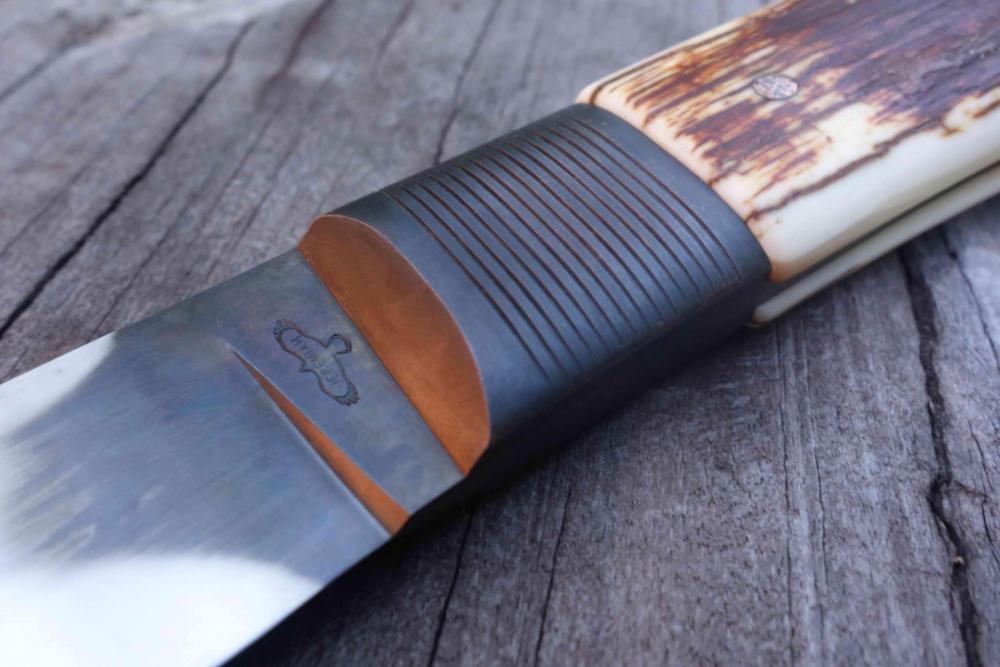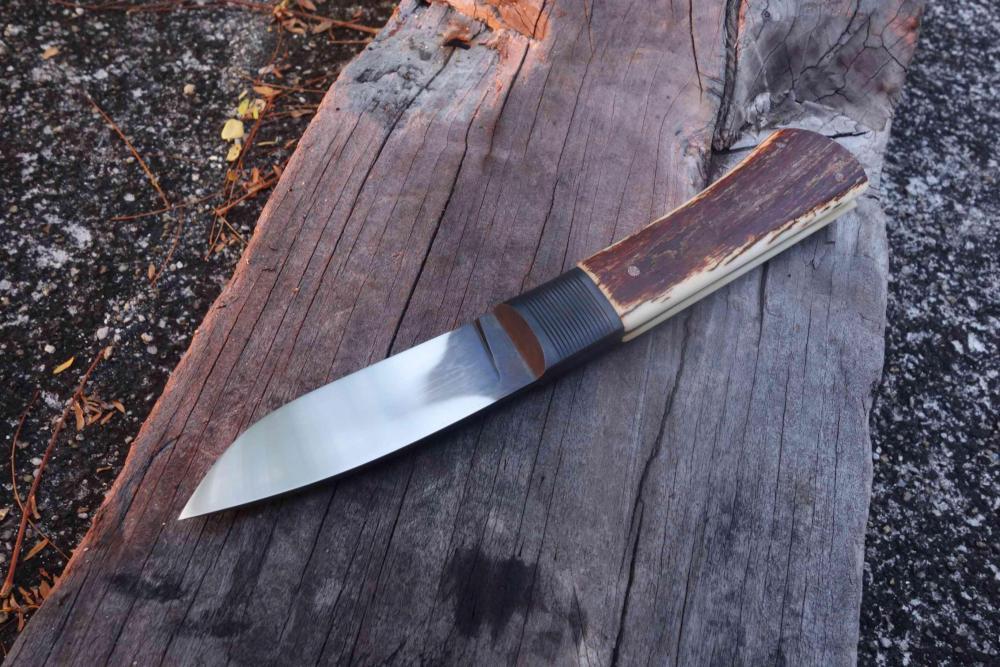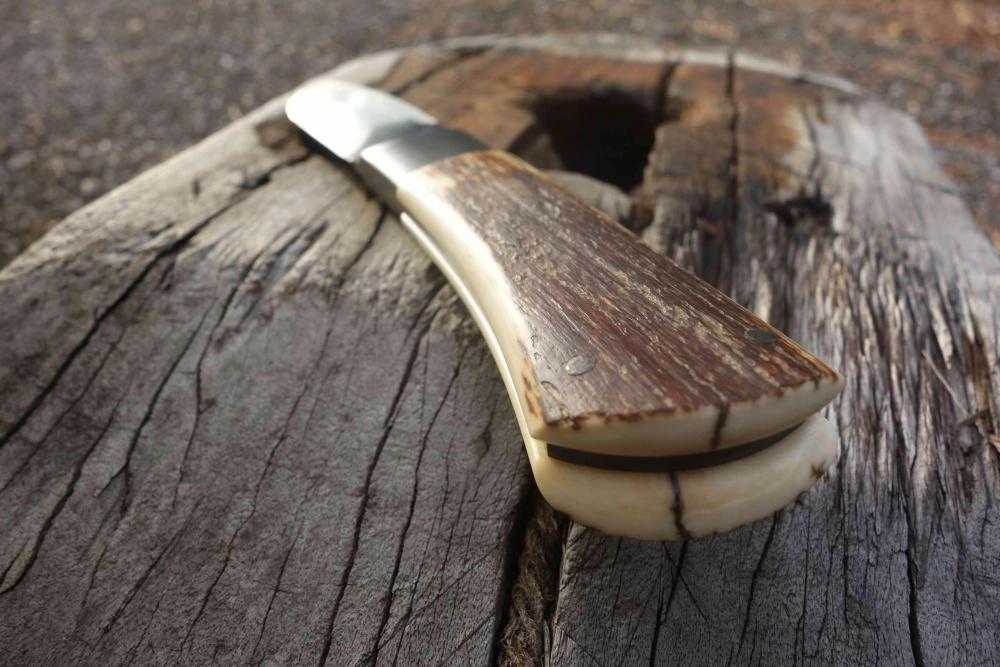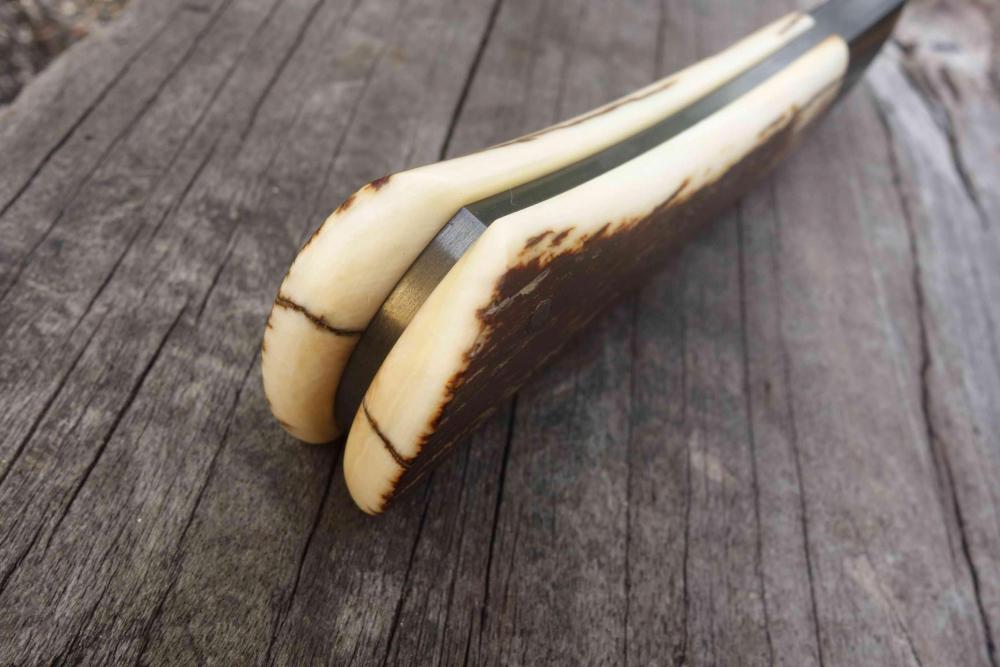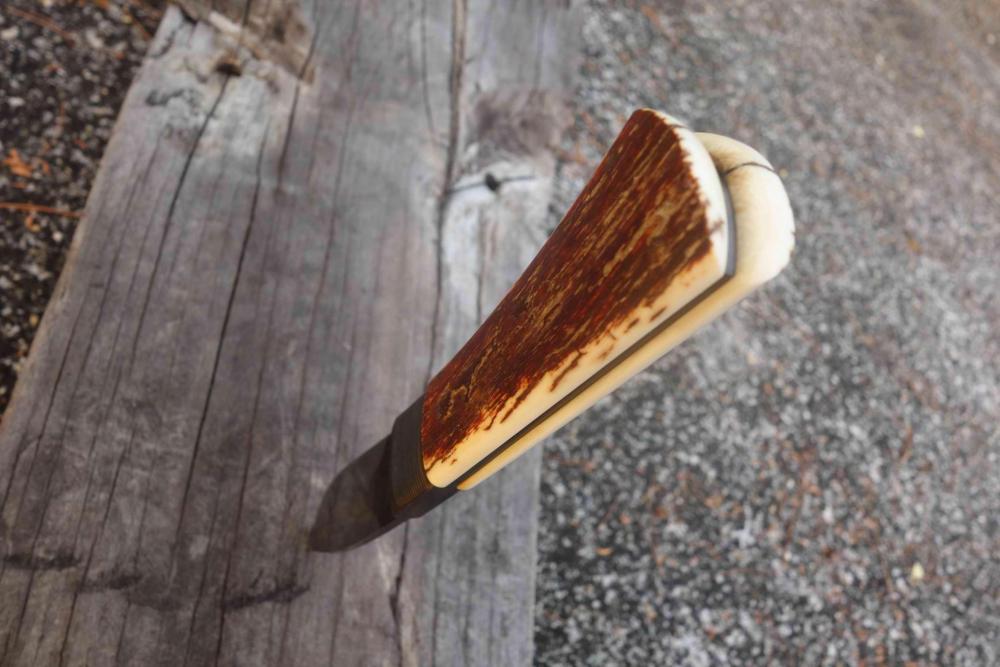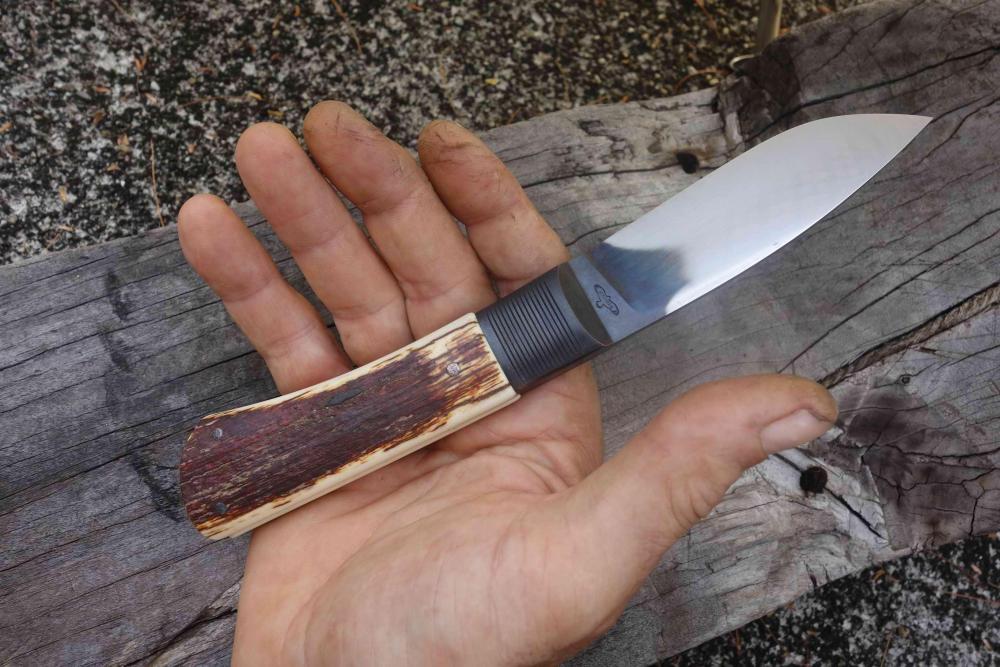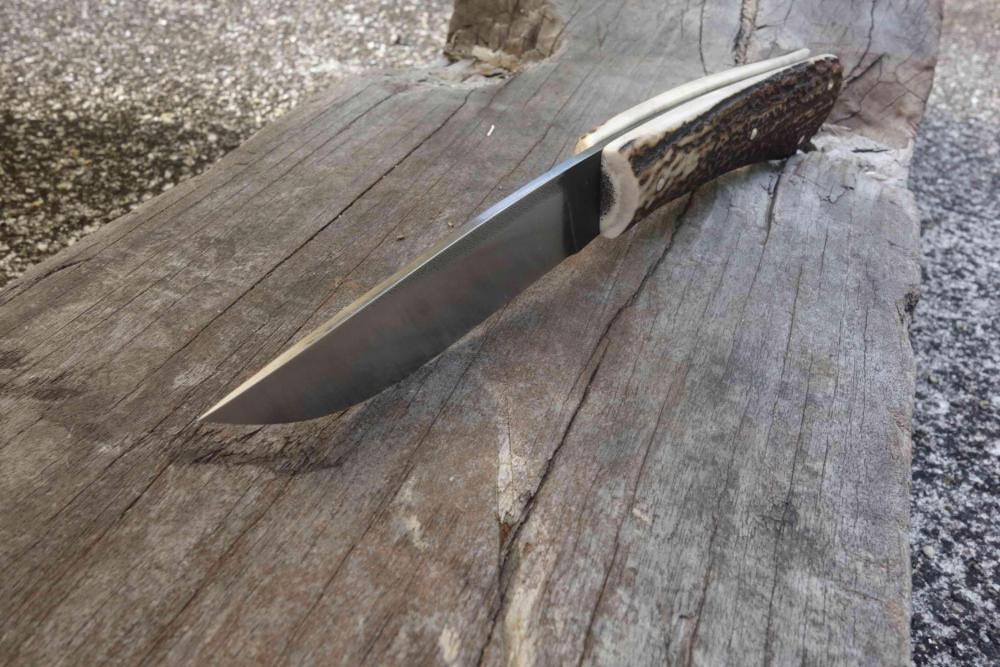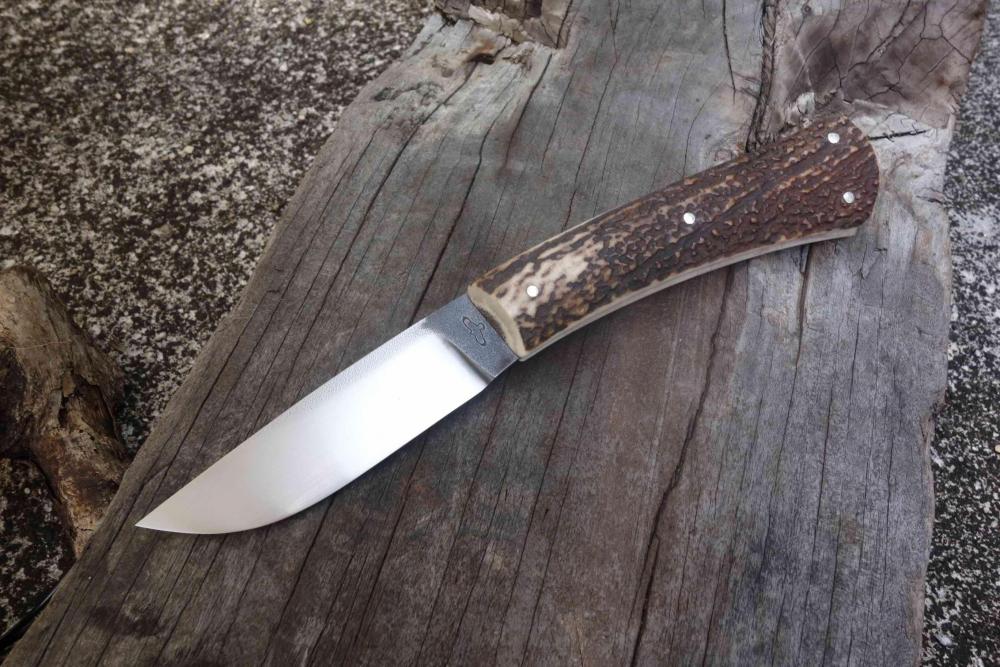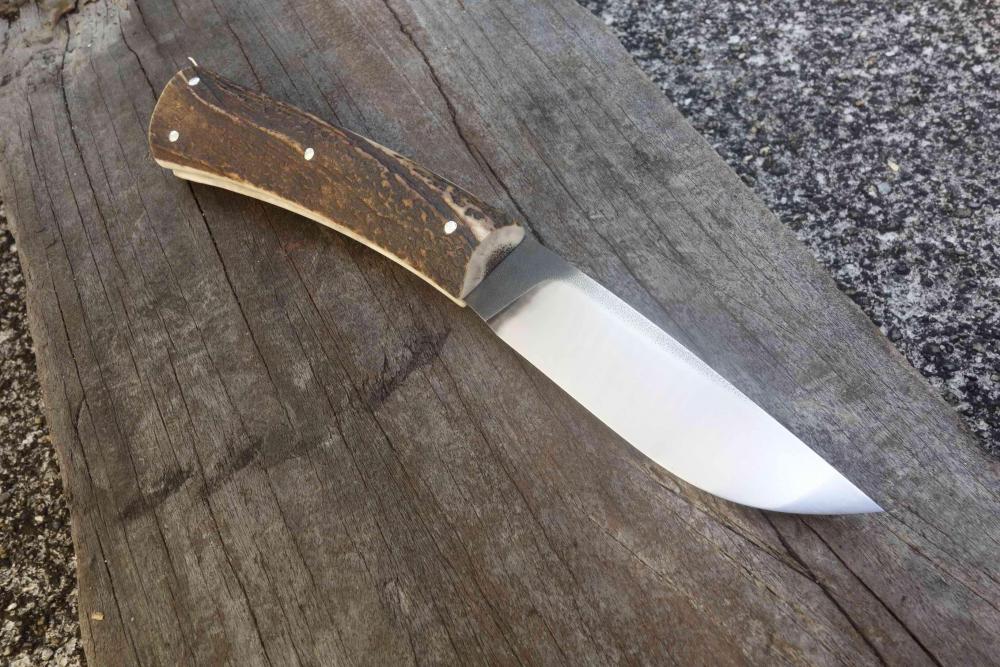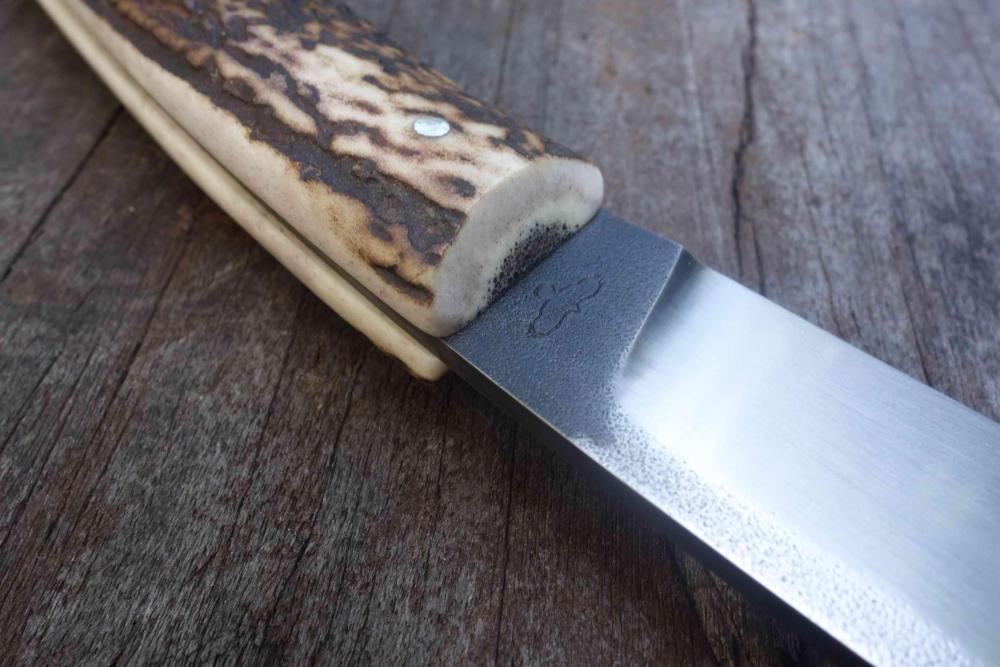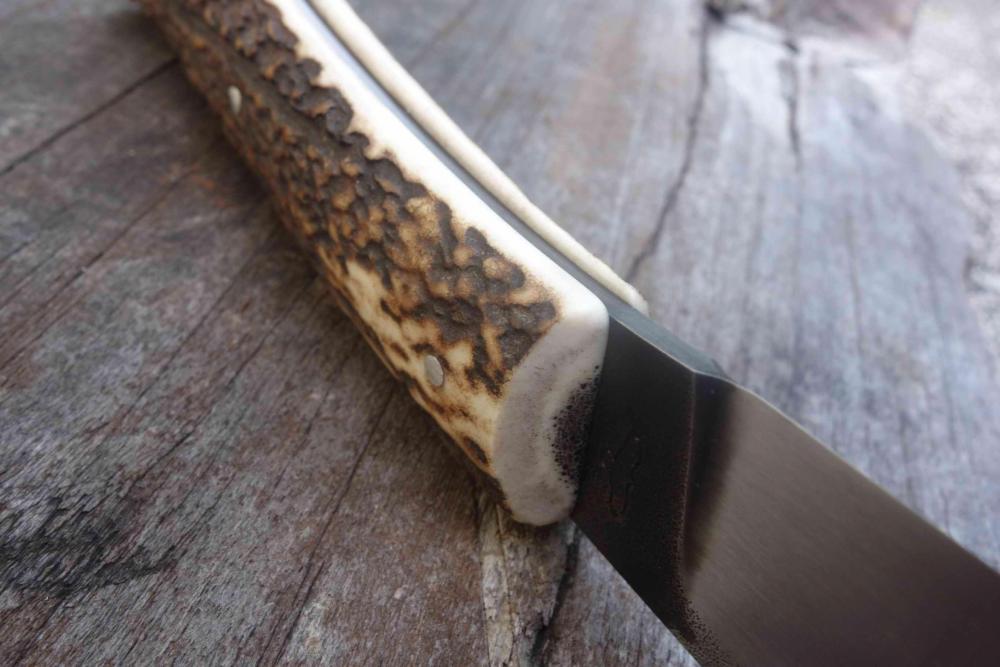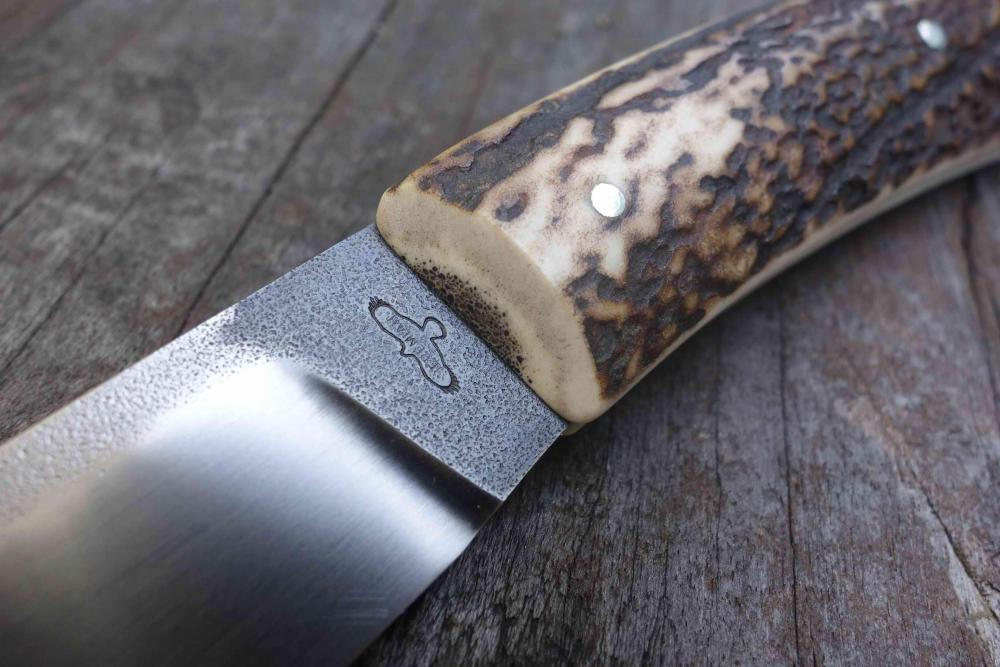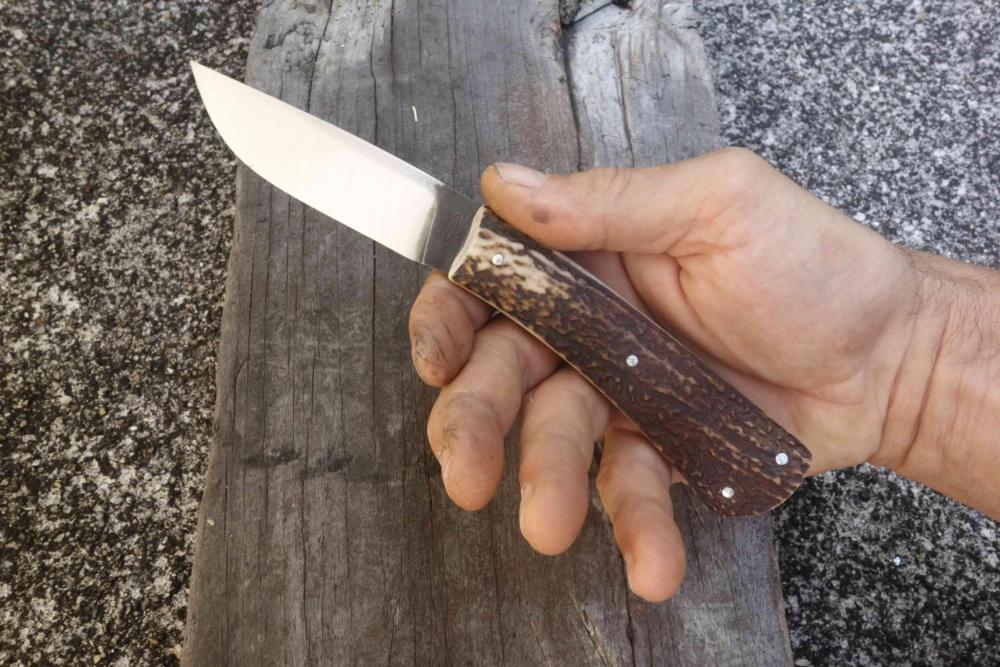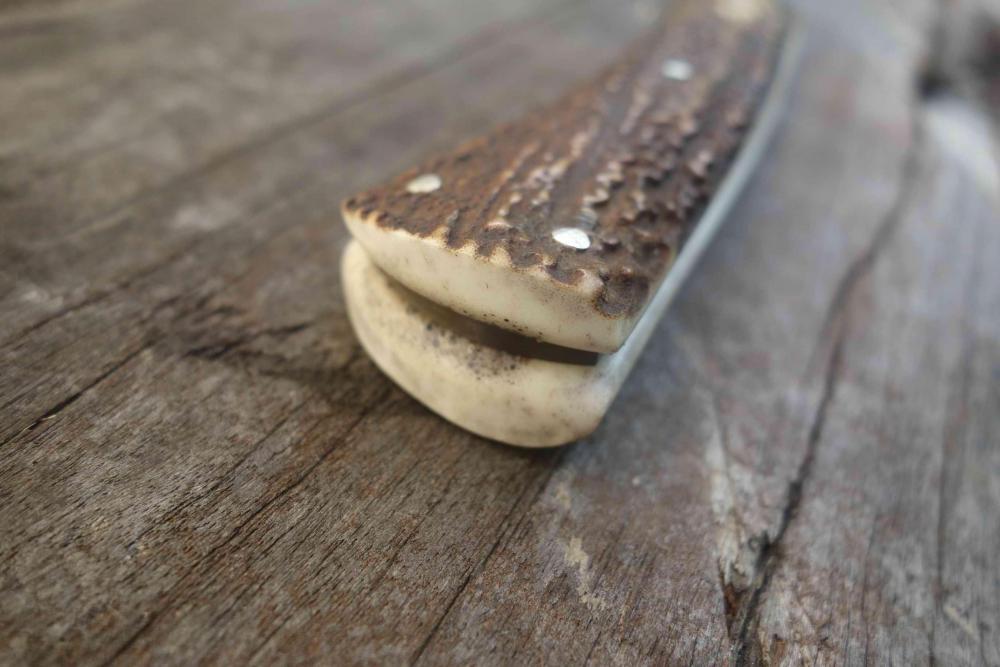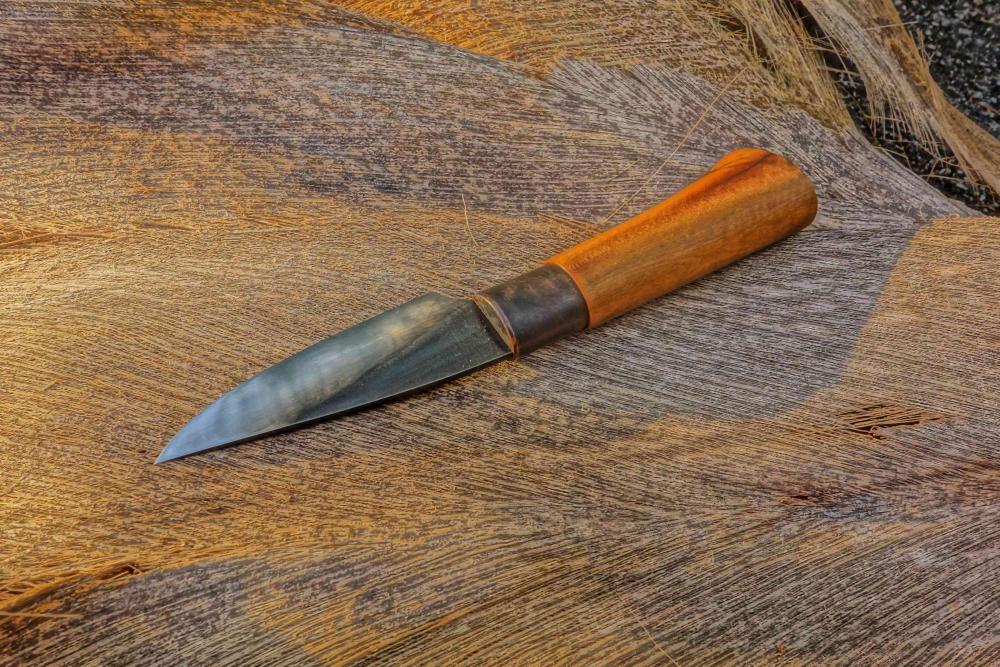-
Posts
448 -
Joined
-
Last visited
Content Type
Profiles
Forums
Articles
Gallery
Downloads
Events
Everything posted by templehound
-
I like the convex grind and of course Your punch mark,...but that tang is definitely to weak.
-
Thanks Marc1! BecauseI I dont like a fullers which goes pointy in and out of the blade, looks inharmonious to my eyes...when a fuller comes from the heft(like on some Medieval swords for example) and tapers with its single tip forwards to the tip this feels/looks more beautiful to me....i am not really sure if I explained this properly in English, but maybe You guys know what I mean I took me quite some time figuring out how to do this. It could have been done by casting but I never liked casting fittings, dosent matter how high end the piece is, it looks like casting all the time....this looks cheap to my eye.....besides this technique I have never seen in accurate, precise execution, always gaps...to speak frankly. so I soldered two half round wires in the slot, using some shaped Titanium as a wedge to hold them in place...was difficult. If the fuller goes behind the heft, it could weaken the tang.So extra attention to the tang is needed. I prefer on every hidden tang knife a wide tang(with true ferrules, there is no concern about the Handle material), because this is the point where a knife has to withstand the most leverage on construction. A T-shaped profile above the fuller and controlled selective heat treatment makes sure it will be cared for the good.
-
My main market is mostly Europe. I do not have the right credit card, no online banking, no pay pal account to sell around the world. Actually selling world wide would make me collaps....got only two hands and one brain Thanks BIGGUNDOCTOR.
-
Nice!......but why not a picture more? This knife deserves different views from different angles....
-
-
This stooping Pilgrim has a 140 mm long, convex ground blade of O7 with a fuller and a ridged back. Ferrule is copper and I chose Golden Teak for the handle. The tang is riveted over the falcons belly. Sheath is reinforced with horn liners. Leather and horn is from water buffalo.Fittings are made from fire finished copper. The knife has an overall length of 270 mm. Cheers
-
Very nice!
-
I triple that!,.....
-
I guess You bought that steel from A.Wirtz(Germany), because he is the only one who makes C125Sc.This is the reason why it is not found on any charts anywhere (I work on some blades with that steel and in my experience it is not very edge holding but very tough compared to the amount of carbon.Very good steel for the forest and the field, it is very! easy to sharpen.) This is a very fine steel with some manganese adding to 1,25%C but it is on absolute file-level.The manganese makes it suitable for quenching in oil instead of water. This kind of steels do not forgive mistakes...like forging 3-4 hours on a single knife blank(wow!) at very high temperature(ouch!)...xxxx, I wonder if there is something left on carbon ...this steel requires accurate control of temperature, rate of cooling down should be very!! fast...if You quench a bit too slow it wont be get hard...and besides You have a grain as coarse as aquarium perlite. If quenched properly every blade shows a natural Hamon. The most common mistakes are that fellows do not use a thermometer and hold too long before quenching....or forge to hot and excessively long... the solution of C in file steels, 125SC and the like is mostly completed after reaching quenching temperature....there is nothing in it that delays the solution of the carbon.After C is in solution, grain growth will start immediately..... one of the aspects is, some guys are interested in forging, not in making knives...and as a "simple specification"they try to make a knife....and adding some forge welding thinking it will go easy, just like this.....besides 3layers are more advanced to weld than You think...because the first weld is double over the full length....Having 40 layers and making them 80 layers is half the weld and easier Compare it making a blade of O1 or O2 via stock removal....heat treated with control and information from all over the net....that results the more or less in a quality knife blade....if You want a knife But making a knife by forging and no help of accurate control and information is like a beginner on the guitar wants to start learning with some Flamenco.... well, speaking honestly....throw it away and start a new blank but get yourself more educated on the subject....those words are not meant to be harsh and discouraging they are meant to stimulate Your thoughts on the subject. good luck
-
Thanks Guys! Daswulf, it is not carried behind or at a belt, for this I think its definitely too small. Just carried in the pocket or bag.
-
I reduced the surface of the O1 blade flank by mixing up flat and hollow grinds. it stropps and sharpens easier and faster to a non bevel sharpness. Due to the climate and the dazzling tropical sun, the surface of the horn developed a beautiful texture and lightened up the subtle green color ...one of the cases where "destruction" causes beauty. It has a copper ferrule and the tang is riveted on the butt. Sheath is made of a bamboo stalk copper and ray skin..... Blade length is 90 mm and 205 mm overall. Cheers
-
They are all quite impressive....but posting a few at the same time makes me automatically pick a favourite..... Man...the first one....that is a wild thing!...so beautiful!
-
-
Most impressive cake knife I have seen.... the damascus is simply stunning!
-
I used a coarse checkering file like the guy uses in this video.To start a guiding jig is needed like he did.You can do this with wood, clamps or even with a piece of wood super glued to the tang(without scales) It took me some time of practice to understand and to feel the moves. Because if Your bolsters have even the slightest taper the grooves will get a different depth.Then You have to lift the file on one side very carefully and file on.The better Your bolster forming is the better the grooves turn out. The two sides of the file have differences , so use only the same side of the file, do not flip it over and never file from the opposite direction! I use one side for Steel and iron and the other for non-ferrous metals like copper, bone and wood. Be nice to Your file cos those files are not cheap, costing about 40-50 Euros( +/- $) https://www.youtube.com/watch?v=kZ1F7pM-x78
-
Thank you very much for the fine comments, Gentlemen! They are appreciated a lot Over the years I just getting frustrated with the shrinkage of so many natural handle materials.Using artificial stuff was never a option because I dont like them. Here in the tropics those materials tend to swell up, because of the high humidity. But in Europe with cold dry winters they all dwindling sooner or later, the more or less. In knife making I always welcome making the need a virtue. This was the best solution.It is much more effort to make but its worth it. So to answer Your question, IMHO this enhances durability, feels extremly good to grip and looks more beautiful to me.
-
The 100 mm long blade was forged from 1.2516 (120WV4) round stock. Bolsters and pins are copper and mammoth for the handle slabs. Overall length is 225 mm. Cheers
-
-
They are growing in the spring and are shed in the end of the winter. I always loved this fact, the stag dosent need it anymore.It is a gift of nature. It's just...You can have a room full of antlers, but so often not the right piece. According to this it depends what the maker expects which quality he needs and how the antler will turn out on the finished knife . .... let form follow function but both of it has to submit to the stag. So for me the consequence is, every chosen antler gets his own special designed blade. Sterling pinned Hungarian red deer, O1 blade and 220 mm overal length. Cheers
-
Yo James, ...well-deserved! Congrats!
-
They are beautiful!
-
Tai Goo makes (IMHO) the most beautiful knives of that kind, ...actually no jig needed. A jig might giving You less freedom in the size and design of the knife. https://www.youtube.com/watch?v=jugsVIhKr8k Cheers
-
Very nice!

